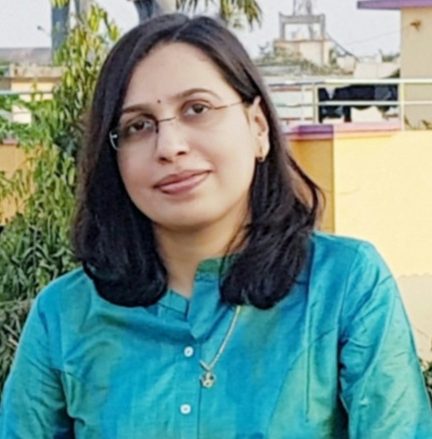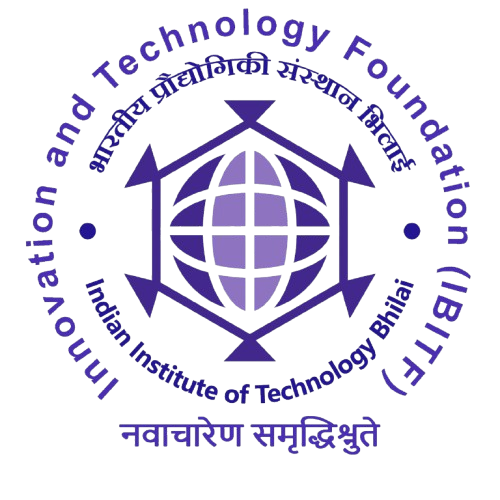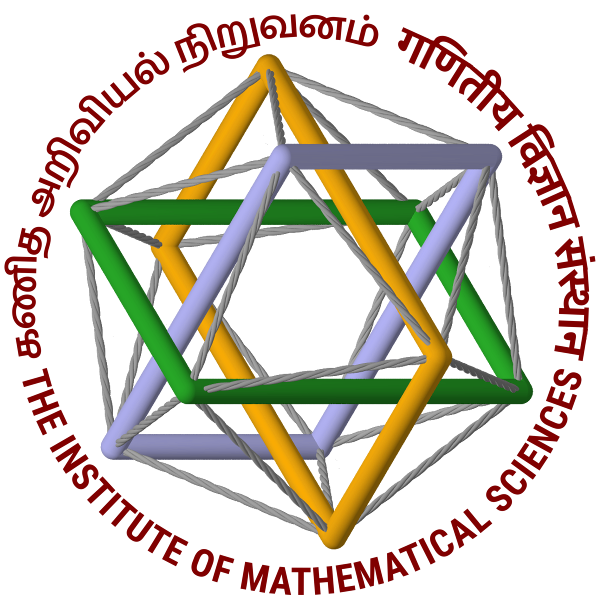About
The Meru Combinatorics Conference is a yearly event held in India, dedicated to the broad field of combinatorics. The conference features two in-depth minicourses delivered by leading experts, along with contributed talks and poster presentations.
Past Conferences:
First Meru Combinatorics Conference 2023
Second Meru Combinatorics Conference 2024
Third Meru Combinatorics Conference 2025
Meru stands for the mountain in Indian mythology and was used as a metaphor for the triangle of binomial coefficients studied by classical Indian prosodists.
Conference Schedule
| Time | Day 1 (June 1) |
Day 2 (June 2) |
Day 3 (June 3) |
|---|---|---|---|
| 08:00 – 09:00 | Registration | ||
| 09:00 – 09:30 | Welcome & Opening Remarks |
||
| 09:30 – 11:00 | |||
| Tea / Coffee Break | |||
| 11:15 – 12:45 |
|
|
|
| Lunch Break | |||
| 14:00 – 15:30 |
|
|
|
| Tea/Coffee Break | |||
| 16:00 – 17:30 |
|
|
|
| 17:30 – 17:45 |
|
|
|
Minicourse Speakers

IIT Bhubaneswar
Integer matrices with integer eigenvalues and Laplacian integral graphs
If all entries of a matrix \(A\) are integers, we call \(A\) an integer matrix. The study of such matrices lies at the intersection of linear algebra, number theory, and group theory. A particularly significant and challenging problem in this context is the characterization of integer matrices whose eigenvalues are themselves integers.
In 2009, Martin and Wong demonstrated that almost all integer matrices have no integer eigenvalues; more precisely, for any \(n \geq 2\), the probability that a random \(n\times n\) integer matrix has at least one integer eigenvalue is 0. This result naturally motivates the following questions: Under what conditions does an integer matrix have all its eigenvalues as integers? Furthermore, is there a systematic method for constructing such matrices? An important source of examples arises from graph theory. A graph is said to be Laplacian integral if the spectrum of its Laplacian matrix consists entirely of integers. Thus, the Laplacian matrices of Laplacian integral graphs form a notable class of integer matrices with integer eigenvalues.
The present lecture series will focus on recent developments concerning the characterization and construction of integer matrices whose eigenvalues are all integers. The series is organized into three lectures:
- Characterization and construction of integer matrices with integer eigenvalues: Foundational results, necessary and sufficient conditions, and explicit methods for constructing integer matrices with integer eigenvalues.
- Spectral integral variation and constructably Laplacian integral graphs: Spectral properties of Laplacian integral graphs and constructive approaches for generating new families of such graphs.
- Graphs with distinct integer Laplacian eigenvalues: The identification and characterization of graphs whose Laplacian eigenvalues are distinct integers, highlighting recent advances and open problems in the area.

Chennai Mathematical Institute
Hyperplane arrangements: at the crossroads of combinatorics, topology, and algebra
Hyperplane arrangements have long been a fascinating and rich area of study in mathematics, bridging combinatorics, geometry, topology, and algebra. Originating in the 19th century from classical geometry and linear algebra problems, the field has since evolved into a deep and vibrant subject in its own right. In the late 20th century, pioneering contributions by mathematicians such as Thomas Zaslavsky and Richard Stanley uncovered profound combinatorial structures, initially motivated by enumerative questions like counting regions and computing characteristic polynomials of arrangements. These investigations revealed surprising connections to algebraic geometry and singularity theory. At the same time, foundational work by Vladimir Arnold and Pierre Deligne on configuration spaces and generalized braid groups expanded the subject’s scope, interweaving topology, combinatorics, group theory, and representation theory. Today, hyperplane arrangements serve as a unifying framework, with applications ranging from the topology of complexified complements to algebraic notions such as freeness and logarithmic derivations.
In this lecture series, I will survey several important milestones in the theory of hyperplane arrangements, with a particular focus on combinatorial techniques and problems that are unique to this area of mathematics. The goal is to provide participants with both historical perspective and modern tools to engage with current research in this exciting domain.
In particular, the detailed plan of three lectures is:
- Enumerative aspects — Counting regions, Zaslavsky’s theorem, bijective techniques, and connections to deformations of reflection arrangements.
- Topological Insights — The topology of complexified complements, configuration spaces, Artin groups, Orlik-Solomon algebras and the NBC (no broken circuit) bases.
- Algebraic Structures — Matroids and arrangements. The concept of freeness, logarithmic derivations, and their algebraic implications.
Organizing Committee
Organizing Committee
Convener:
Dr. Anurag Singh, IIT Bhilai
Co-conveners:
Prof. Arvind Ayyer, IISc
Prof. Amritanshu Prasad, IMSc
Chief Patron
Prof. Rajiv Prakash
Director, IIT Bhilai
Local Organizing Committee
Dr. Anurag Singh, IIT Bhilai
Dr. Lakshmi Kanta Patra, IIT Bhilai
Dr. Rishi Ranjan Singh, IIT Bhilai
Scientific Advisory Committee
Prof. Arvind Ayyer, IISc
Prof. N. Narayanan, IIT Madras
Prof. Amritanshu Prasad, IMSc
Prof. S. Sivaramakrishnan, IIT Bombay
Event Support Team
Shrajal Bajpai
Anamitro Biswas
Himanshu Chandrakar
Kirtidev Mohapatra
Miku Naik
Sonu Nigam Naik
Dipak Patra
P. Vignesh
S Devika
Tapaswini Sahu
Important Dates
Registration & abstract submission deadline : 15th February 2026
Notification of acceptance: 5th March 2026
Last date for payment of registartion fees: 5th April 2026
Conference Dates: 1st to 3rd June 2026
Registration & Abstract Submission
Interested candidates are requested to register for the conference using the following link :
Registration link (with or without abstract submission)
- Regular: INR 5000
- Students and Postdoctoral Researchers: INR 2000
Registration Fee Details
The payment link, along with detailed payment instructions, will be shared with the selected participants via email.
Sponsors
Venue
Location:
IIT BHILAI
Kutelabhata, Durg, Chhattisgarh, 491002, India
Accommodation: TBA
How to reach
By air
The nearest airport is Swami Vivekananda International Airport in Raipur, about 55 km away. The best option for commuting is by car, that takes 1 to 2 hours depending on the time of the day. A one-way car ride costs roughly Rs 1000-1500, and an additional parking charge of Rs. 60 while leaving the airport. The airport is connected by flight to all major metro cities of India, with particularly more flights to and from Delhi, Mumbai and Kolkata.
By railways
The nearest railway station is Durg. It takes about Rs. 200 for reserving an auto-rickshaw to the station from the IIT, and Rs. 500 by car. Raipur junction (38 kilometers away) has a greater number of options for train routes, and takes less than 1 hour from Durg by local train which are available throughout the day at certain intervals. Raipur lies on the main route between Mumbai and Kolkata; and daily direct trains connecting Delhi, Kolkata, Chennai and Mumbai are available. Direct trains to many cities like Ahmedabad, Allahabad,Varanasi, Bangalore, Cochin, Pune and Hyderabad are also available.
By road
Bhilai is connected by roadways to many major towns. A journey to Hyderabad takes approximately 13-15 hours, with fares starting around Rs. 900-Rs. 1000 by bus. Pune is 18-20 hours away, with fares around Rs. 1200-Rs. 1400. Nagpur takes roughly 6-7 hours, with fares starting at Rs. 400 and Indore 14-16 hours, and ticket prices start at Rs. 1050. Buses to Sambalpur take roughly 5-6 hours. Buses are available both from Bhilai and more frequently from the Inter-State Bus Terminal in Raipur, approximately 40 km away.
Contact
For any queries, write to us at: meru@iitbhilai.ac.in



